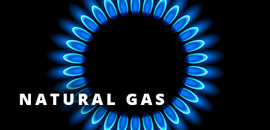PROGRESS REPORT
Not reported.
GOALS
Not reported.
| Utility | Target Year | Benchmark Year | Percentage Goal |
|---|---|---|---|
| Water | 2024 | 2020 | 1 |
| Electricity | 2024 | 2020 | 1 |
| Transportation Fuels | 2024 | 2020 | 1 |
| Natural Gas | 2024 | 2020 | 1 |
STRATEGY FOR ACHIEVING GOALS
TxDOT uses a variety of energy saving exercises to reduce energy consumption. TxDOT targets heating, ventilation and air conditioning systems, lighting systems, windows, roofs, and water consuming plumbing devices. TxDOT purchases and installs the highest efficiency HVAC systems, while maintaining a cost effective stance. TxDOT also uses a night setback schedule and unoccupied modes in the building automation system to alter the space temperature setpoint. Whenever the space is scheduled to be "unoccupied"TxDOT changes the setpoint of the space to a more aggressive energy saving setting. In addition to that setback, TxDOT also uses occupancy sensors in some of the spaces. These sensors can determine if the space is unoccupied and will act accordingly to reset the space temperature according to being occupied or unoccupied. TxDOT is now leveraging the newer "chill beam"type of HVAC system. This chill beam system reduces fan energy and produces a much quiter operation than a conventional system. TxDOT is now purchasing chillers that come equipped with variable frequency drives (VFD). These VFDs allow the chiller to start up and run using minmual start up and right sized load amperage. Chillers that are not equipped with VFDs usually consume 4 to 5 times their normal running loaded amperage to start up. Whenever possible TxDOT installs light emitting diode (LED) lighting to reduce energy consumption and increase reliability. TxDOT is using an automated shade control system to harvest daylight. This system raises and lowers the window coverings to allow more light into the space when needed. As the system allows more daylight in; it dims the lighing levels automaticlty to take advantage of this natural light. TxDOT also utilizes energy saving roofing systems. These reflective roofing systems are designed to offset heat gain and loss through the top levels of the facilities. TxDOT specifies the most efficient windows to offset heatgain and loss through these window panes. TxDOT has specified and installed low flow plumbing fixtures in newer break rooms and restrooms. These new low flow fixtures allow TxDOT to reduce the amount of water needed for normal building occupation. TxDOT uses reclaimed water from the condensate runoff from our air handlers to makeup the cooling tower water that was lost to evaporation.
IMPLEMENTATION SCHEDULE
TxDOT utilizes these energy saving measures mentioned previously anytime new construction projects are being undertaken. Anytime that TxDOT replaces or retrofits existing systems; these system are evaluated and whenever possible also utilize the energy saving measures mentioned previously.
AGENCY FINANCE STRATEGY
Not reported.
EMPLOYEE AWARENESS PLAN
TxDOT's energy savings plan is used to help shape the operational guidelines for the facilities. This plan is mentioned and reference through out the document.






